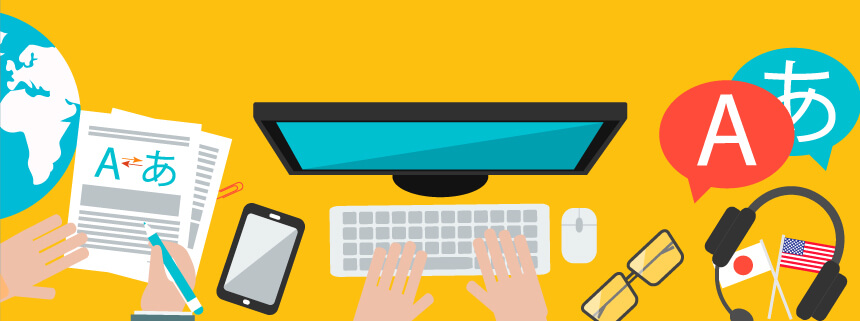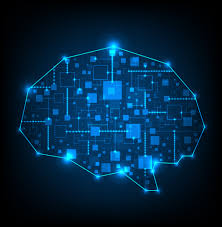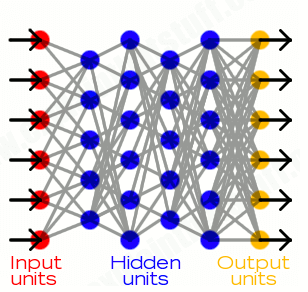Month: July 2016
The Language of Science: Scientific Communication

English is undoubtedly the primary language of modern scientific communication of international science, with an estimated 98% of all scientific publications being written in the language. The linguistic command of English is also seen in scientific journalism worldwide, depending strictly on English sources. Using a single international language for science facilitates the circulation of scientific knowledge across national and even cultural boundaries. But it hasn’t always been that way.
Scientific Communication: The Early Lingua Franca
Before the 17th century, scientific publications were primarily written in Latin. For example, in 1687, Sir Isaac Newton wrote his book Philosophiæ Naturalis Principia Mathematica, which explained his laws of motion and gravity in the Latin language. At the time, education wasn’t accessible to most of the population, so Latin was the language of the elite and intellectual classes. Even the name ‘gravity’ reflects this, coming from the Latin word ‘gravitas,’ which means heavy.
Gradually, more scientists began publishing their works in the vernacular to make their ideas accessible to the masses, and Latin lost its status as the scientific lingua franca. But since the primary reason for publishing scientific research was to share ideas and knowledge, there was concern that publishing scientific papers in so many different languages would hinder scientific communication and the understanding of necessary research being conducted abroad. Although English in our modern era has gained dominance over scientific publications, it does not mean that each native language is not defended, as required in the language of the scientist’s community. By the mid-19th century, three primary languages were used to promote scientific thought: English, French and German.
However, a publication available in only one language can be understood by the academic community with sufficient language skills in the published language. Professional scientists were expected to be proficient in all three languages and publish exclusively in those languages. By 1900, the dominant language of science was German. Thanks to leading scientists like Einstein, Planck, Heisenberg and others, it remained that way until World War I led to boycotts of German scientists who were often barred from publishing in Western European journals.
English Takes Over as The Language of Science
Conflicts throughout the 21st century, including both World Wars and the Cold War, transformed the way scientists around the world communicated with each other. By the mid-1990s, English had firmly established itself as the language of science. Nowadays, anyone who wants to share their ideas must publish their work in English.
In many countries, college-level science education is now conducted in English—partially because studying science in English is good preparation for a future scientific career and partly because the necessary words often don’t exist in any other language. Many scientific textbooks are written in English for students in non-English speaking countries. These students are required to have proficient English to pursue degrees and, eventually, careers in the sciences.
This poses problems for scientists and students who do not speak English as their first language. Considering that just 15% of the world’s population speaks English, with just 5% speaking English as their mother tongue, the fact that the latest scientific discoveries are primarily written about in English can make the whole profession seem inaccessible.
It’s difficult enough to read a scientific paper in a foreign language, but the requirement to write a scientific essay in English can seem an impossible task when it’s not your mother tongue. It involves explaining complex theories and using nuanced language to ensure the reader thoroughly understands the concept, which requires another skillset entirely.
The fact that English has become the language of science isn’t likely to change any time soon. But how can scientific papers be made more accessible to those who speak English as a second language? Can we optimize communication and level the playing field to ensure scientists around the world can be heard?
Improving Multilingualism in Scientific Communication
Publications that are available in two or more languages can be read and understood by more people and contribute to improved dissemination of scientific knowledge, providing added value to society as a whole.
Scientific journals have an opportunity to translate research abstracts and articles to make them available in languages other than English. Some journals offer abstracts translated into other languages, while English remains to gatekeep a portion of the scientific community and general public from the research. Enlisting a language services provider (LSP) can produce a high-quality translation to even the scientific playing field.
Morningside has provided leading pharma, biotech and medical device companies with reliable language solutions for over 20 years. Our expertise covers the spectrum of therapeutic and technical proficiencies, and our linguists are rigorously vetted to ensure end-user comprehension and preservation of intended meanings, whatever the subject matter.
By employing industry-leading technologies – some of which are proprietary, we decrease turnaround time, control costs, and enhance the quality of your translations. Translation Memory ™ tools, client-specific glossaries, and our proprietary Quality Reliability Indicator (QRI) are some of the intelligent, secure, ISO 27001-backed technologies we utilize to mitigate risk and ensure consistent reliable translations.
About Morningside
Morningside, a Questel Company, equips the world’s leading life sciences organizations with a full suite of end-to-end language solutions for their regulatory, clinical, commercial and patent needs. With over 4,000 clients in 55 countries, we’re globally recognized for our life science expertise and technology innovation across pharma, biotech, medical devices, and healthcare. Our life sciences translation services ensure your products and ideas seamlessly reach new markets and comply with all regulatory and cultural requirements through every stage of the product lifecycle — from patent to post-market.
Working exclusively with qualified subject matter experts (SMEs) is part of our unwavering commitment to quality. Morningside employs ISO 9001, 13485, and 17100-compliant processes and controls and a 3-tier linguistic review process. As an added step to mitigate risk, our proprietary algorithm, the Quality Reliability Indicator (QRI), monitors projects, preemptively identifies areas of potential risk and prevents quality issues before they happen to ensure a reliable and repeatable outcome.
Get the latest insights delivered to your inbox
Morningside’s Japanese Translation Services

At Morningside, we translate a vast range of documents and texts into over 100 languages, and have worked with clients around the world to help them successfully reach out to new consumers and do business in the global marketplace. While Morningside has years of experience in multiple languages, one language which we are particularly experienced in and translate frequently is Japanese.
Japan is one of the world’s major economic powers, despite its small size, and is a significant manufacturing hub for many industries, including automobiles, electronics and pharmaceuticals. We work with many Fortune 500 companies, government bodies, regulatory agencies and law firms all over the world who require professional translation of documents and patents both from and into Japanese. With such high demand for Japanese translations, we have a highly-skilled team of Japanese translators on hand with an impressive knowledge of Japanese technical terminology, language and culture.
Key Practice Areas for Japanese Translation
Many of the companies we work with require translation of documents to manufacture consumer products, technical products or pharmaceuticals. In addition, our Japanese translations are frequently used for litigation purposes. For this reason, legal, patent, medical and business translation are our most important practice areas, and we have talented, experienced linguists on hand to handle each area. Our in-country translators are all fully certified with proven experience in their subject matter. This provides our clients with the peace of mind knowing that their documents and patents are accurately and professionally translated in accordance with local language, technical terms, legal guidelines and regulatory standards.
Although manufacturing, pharmaceuticals and technology are three of the major industries for which we provide Japanese translation services, we also cater to the following industries:
- Legal
- Finance
- Consumer products
- Human resources
- Energy
- Media
- Government
- Life sciences
When it comes to technical subjects such as engineering, medicine or pharmaceuticals, documents are always reviewed by qualified translators with an educational background in the relevant field. We set the highest standards in the industry when it comes to hiring and vetting translators.
Fast Translations for Fast-Moving Industries
Things happen quickly in big corporations, and even more so during litigation, so we know how important it is to work quickly and efficiently while still ensuring the highest level of quality. We often perform rush jobs for clients in need of Japanese translations, and can reliably maintain our high standards even on the tightest of deadlines. Our schedule runs around the clock, 24 hours a day, 7 days a week, so we are always available to deal with inquiries and get started on urgent translations.
Japan is one of the most important and innovative markets in the world, and with our professional translation services at hand we’re helping hundreds of clients to successfully become a part of it.
Get the latest insights delivered to your inbox
Welcome to the World of Neural Machine Translation

Decades of well-funded machine learning and artificial intelligence R&D is starting to make its mark on the world of machine translation. Over the last few months there have been several important announcements from the likes of Google, Facebook, and Microsoft about their initiatives in applying artificial intelligence (AI) technologies to translation. For example:
- On April 28 Google’s US patent application “Neural Machine Translation Systems With Rare Word Processing” was published. Google is claiming exclusive rights to an NMT system made specific by how the system is implemented.[1]
- Facebook, which serves up two billion translations each day,[3] has begun the transition away from the Bing translation system to a new neural network system to be fully deployed by the end of this year[2].
- In February Microsoft revealed that they are leveraging AI―including deep learning―for their own Translator Hub.[4]
So what is Neural Machine Translation?!
Current phrase-based machine translation systems consist of many subcomponents that are optimized separately. Neural machine translation is a novel approach in which a single, large neural network is trained, maximizing translation performance.[5] In the Google patent application mentioned above a neural MT system is defined as “one that includes any neural network that maps a source natural language sentence in one natural language to a target sentence in a different natural language.”
Neural networks are a deep learning technology that simulates the densely interconnected network of neuron brain cells that allow us to learn, recognize patterns, solve problems and make decisions.

A fully connected artificial neural network is made up of input units (red), hidden units (blue), and output units (yellow), with all the units connected to all the units in the layers either side. Each connection is assigned a “weight”, which indicates the strength of
the connection between the units.
Inputs, which are fed in from the left, activate the most relevant hidden units in the middle, which then activate the appropriate output units to the right.
Neural networks are trained by comparing the output produced with the output it was meant to produce, and using the difference between them to modify the weights of the connections between the units in the network.[6]
Neural Machine Translation systems are far more complex and adaptive than statistically trained models. Once trained, a translation neural network has contextual awareness and deep learning capabilities that allow it to understand the domain in which a conversation is taking place and the linguistic norms of that environment.[2]
The Promise of NMT
NMT is still in its infancy and transforming it into a truly robust platform will be a highly collaborative effort. Google may end up holding a seminal patent but as Language Weaver co-Founder Marcu notes, “There are hundreds of statistical-MT-related patents. Getting statistical MT to work required hundreds of innovations. Neural MT is no different. It will require hundreds of innovations and patents to get MT to the next level of accuracy.”[1]
To this end, it is encouraging to note that last year Facebook open-sourced Torch, its deep learning library, and, later in the year, it open-sourced its AI server Big Sur. In November, Google opened its TensorFlow machine learning library for public use. Amazon released its deep learning software DSSTNE last month.[8]
In addition, watch out for hardware advances that will further enhance the performance of neural networks in general, and NMT in particular. At the end of May the startup company Nervana announced that, in cooperation with Google, it is designing and building a custom ASIC processor for neural networks and machine learning applications that will run 10 times faster than the graphic processor units (GPU) that are typically used today for neural network computations.
As NMT takes machine translation to the next level, human translators will have a powerful partner in the quest to achieve and maintain the highest levels of quality in the face of ever-growing quantities of content to be translated.
References
[1] Marion Marking, Google Applies for Neural Machine Translation Patent, Experts React, May 24, 2016
[2] Peter Corless, Facebook, Google and the Future of Neural MT, June 2016
[3] Rachel Metz, Facebook Plans to Boost Its Translations Using Neural networks This Year, May 23, 2016
[4] Gino Dino, Confirmed: Deep Learning Is Coming to Google Translate, March 17, 2016
[5] Neural Machine Translation by LISA, University of Montreal, 2014
[6] Chris Woodford, Neural networks, March 18, 2016
[7] Steven Max Patterson, Startup Nervana joins Google in building hardware tailored for neural networks, May 31, 2016
[8] Khari Johnson, Facebook wants chatbots to learn the way people do, June 16, 2016


